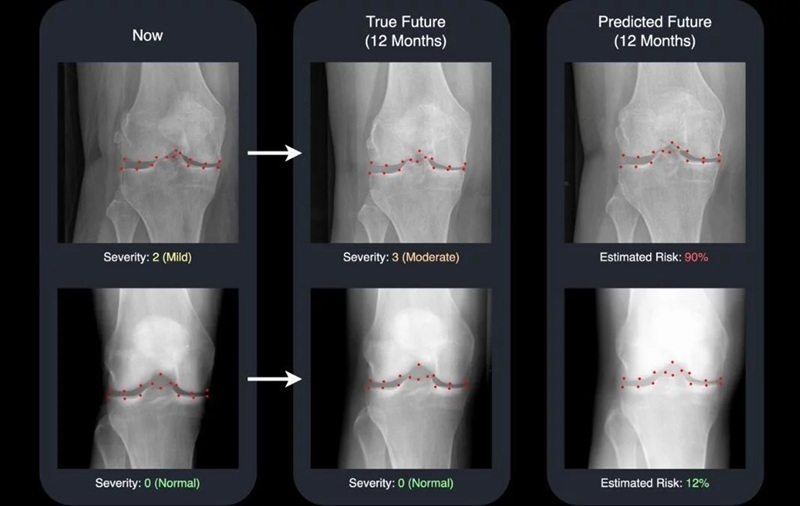Radiotherapy Developments Improve the Quality of Treatments for Patients with Head and Neck Cancer
By MedImaging International staff writers
Posted on 18 Dec 2009
Clinical studies suggest that sophisticated treatments such as intensity-modulated radiotherapy (IMRT) and image-guided radiotherapy (IGRT) are enabling radiation oncologists to enhance posttreatment health-related quality of life for patients with head and neck cancer. Posted on 18 Dec 2009
In an educational session for radiotherapy professionals, delivered by two noted experts during the November 2009 annual meeting of the American Society for Radiation Oncology (ASTRO) in Chicago, IL, USA, Avraham Eisbruch, M.D., professor at the University of Michigan (Ann Arbor, USA), discussed how careful implementation of IMRT in the treatment of head and neck cancer can achieve high tumor control rates while minimizing xerostomia, a dry mouth condition that occurs when salivary glands are damaged.
Citing a new report summarizing results from the Radiation Therapy Oncology Group (RTOG), RTOG-0022, a multi-institutional study comparing IMRT with earlier forms of treatment for head and neck cancer, Dr. Eisbruch reported that IMRT for head and neck cancer achieved important goals in reducing treatment toxicity, notably xerostomia, and in yielding a high tumor control rate of 90%.
For patients enrolled in the study and treated with IMRT, only 55% experienced grade 2 or worse xerostomia at six months after treatment, as compared with 84% of patients treated with earlier forms of radiotherapy--a reduction of 35%. For the IMRT group, the percentage of patients with grade 2 or worse xerostomia decreased steadily, to 25% at 12 months and 16% at 24 months. "This kind of improvement over time is not something we had been seeing with conventional forms of radiotherapy,” said Dr. Eisbruch, who served as chair of RTOG-0022. "Also, emerging data are suggesting that we can get improvements in broader aspects of posttreatment quality of life by using IMRT, beyond reducing xerostomia,” Dr. Eisbruch said. "Several studies comparing IMRT with conventional radiotherapy found that the IMRT patients did better not just in terms of dry mouth, but also other quality of life dimensions, including swallowing and nutrition.”
According to Dr. Eisbruch, RTOG-0225, another multi-institutional study looked at IMRT with or without chemotherapy for head and neck cancer, and also reached positive conclusions. "That group reproduced the excellent results that individual treatment centers had been reporting, namely, a 90% loco-regional progression-free survival with minimal grade 3 and no grade 4 xerostomia.”
IMRT involves shaping radiotherapy treatment beams so that they deliver a dose pattern that matches the size and shape of a targeted tumor while minimizing exposure of surrounding healthy tissues and organs. This approach has been widely adopted by radiation oncologists for the treatment of diverse forms of cancer. Ongoing clinical studies are now maturing, allowing long-term outcomes to be assessed, and validating IMRT based on clinical data.
Lei Dong, Ph.D., associate professor of medical physics at the MD Anderson Cancer Center (Houston, TX, USA), detailed at the meeting how new image-guidance technologies additionally enhance the accuracy of IMRT treatments by enabling clinicians to correct for patient set-up uncertainties and anatomical changes over a course of treatment.
"Clinicians naturally want to take advantage of the more conformal dose distributions that IMRT makes possible by reducing the treatment margins around a tumor, to protect more healthy tissues,” said Dr. Dong. "When we do that, it is important to ensure that the treatments are targeted very precisely, so the tumor receives the high dose treatments, and the dose to surrounding tissues and organs is kept as low as possible.”
Dr. Dong discussed the issue of basing radiotherapy treatment plans on single computed tomography (CT) scans taken during treatment simulation. "Internal motion can affect the accuracy of tumor definition if the CT scan is acquired while the patient is swallowing,” he said, referencing a study he worked on with colleagues from M.D. Anderson Cancer Center.
According to Dr. Dong, stereoscopic X-ray imaging and volumetric cone-beam CT imaging, two imaging techniques enabled by Varian's (Palo Alto, CA, USA) On-Board Imager kV imaging device, make it possible to customize patient positioning just prior to each daily treatment. In addition, frequent imaging can alert clinicians to changes in a patient's anatomy over time, so that a new treatment plan can be developed partway through a course of treatment whenever warranted--a process called adaptive radiotherapy.
"Preliminary studies have shown that combining IGRT and adaptive IMRT replanning can improve the overall quality of the treatment plan, and most importantly, reduce unnecessary doses to normal organs surrounding the tumor, such as the parotid glands and oral cavities,” Dr. Dong said "Combining IGRT with IMRT creates a powerful tool for high precision radiation therapy.”
Related Links:
University of Michigan
MD Anderson Cancer Center
Varian
RTOG














